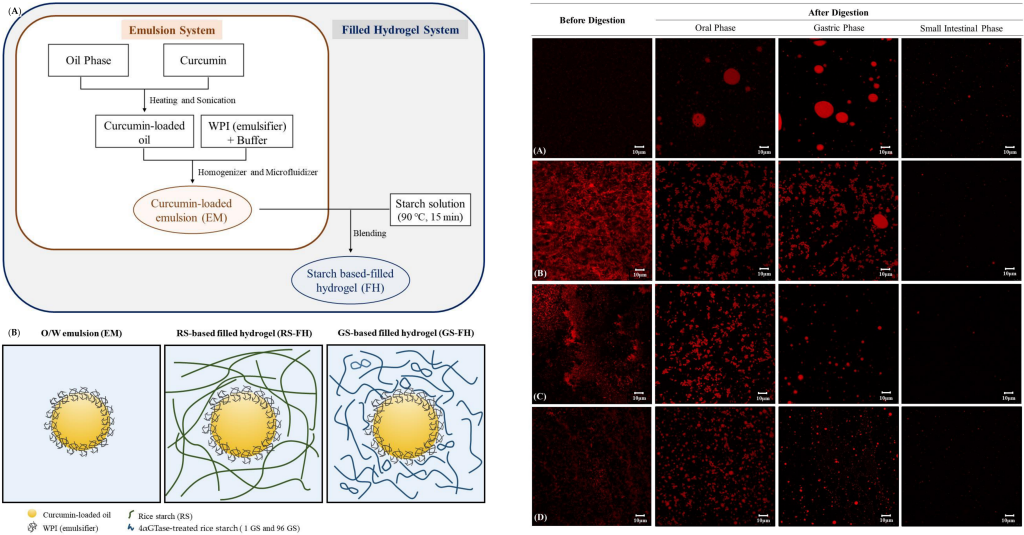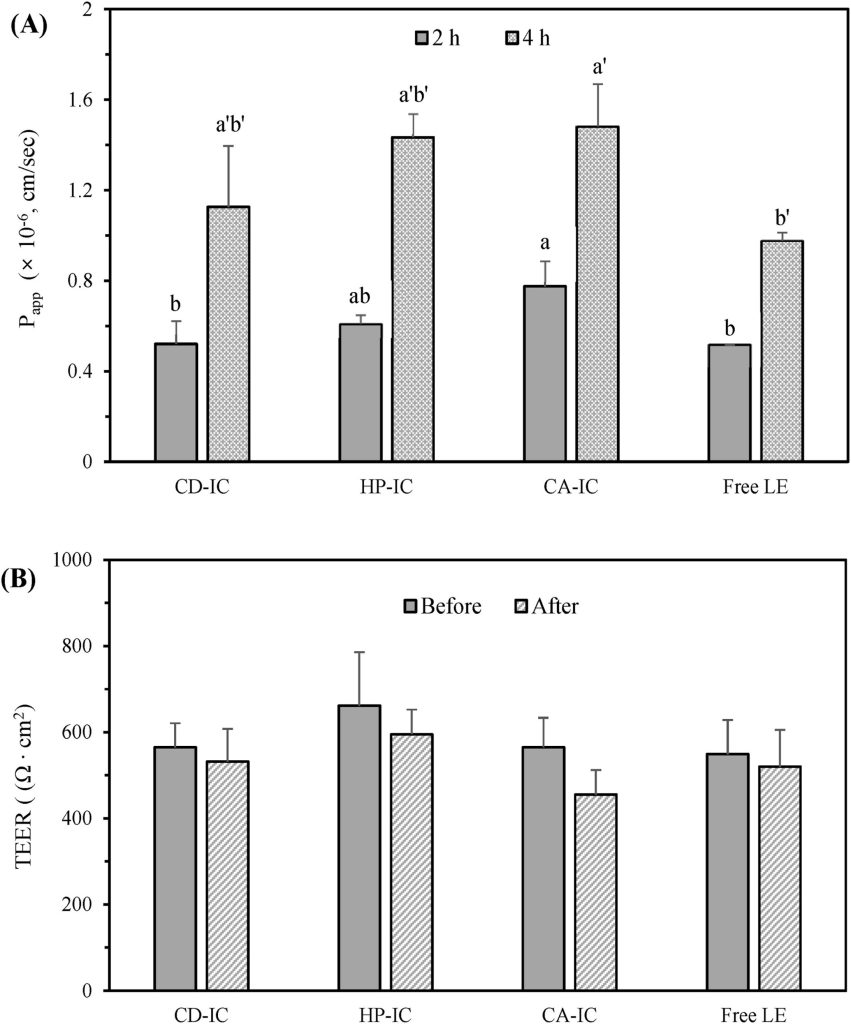Encapsulation delivery system
- Bioaccessibility (In vitro gastrointestinal digestion model)
Many bioactive compounds beneficial to humans are highly susceptible to environmental stressors and have low bioavailability, making them challenging to utilize effectively through simple addition to products. To maintain their stability while maximizing functionality, encapsulation systems such as emulsification, gelation, and inclusion complexation are employed.
Our laboratory focuses on developing effective encapsulation systems to enhance the functionality and bioavailability of bioactive compounds. To evaluate these systems, we simulate the human digestive process step by step in vitro, analyzing the biological accessibility and stability of the bioactive compounds.

- Bioavailability (Caco-2 cell permeability)
Ingested foods or compounds are exposed to digestive environments, including low pH, digestive enzymes, and bile acids, which can lead to physical and biochemical degradation before reaching the intestines for absorption. To predict how much of a bioactive compound can be absorbed by the human body from functional foods, we use in vitro models based on Caco-2 cells, which mimic the characteristics of intestinal epithelial cells.
In our laboratory, we measure the permeability of bioactive compounds across monolayer-cultured Caco-2 cells to quantify their absorption and secretion from digested materials that have passed through the gastrointestinal tract.

